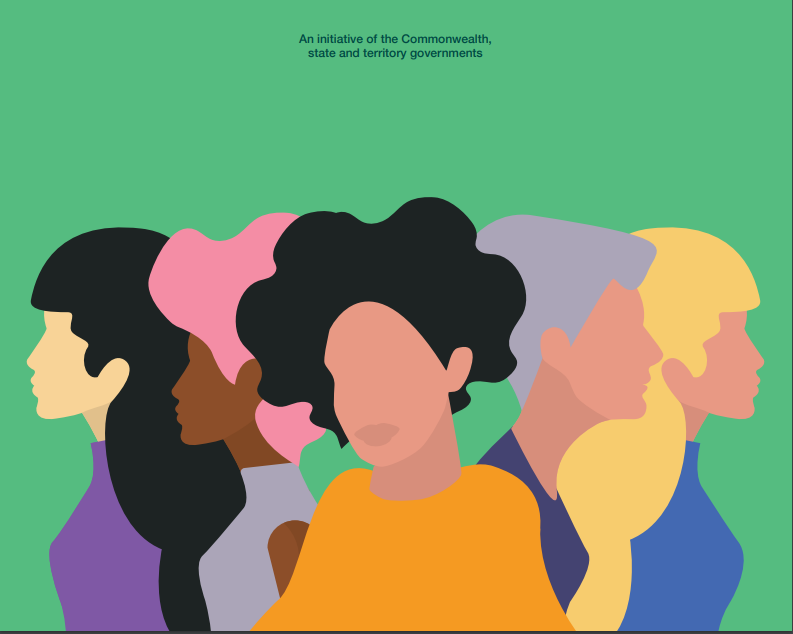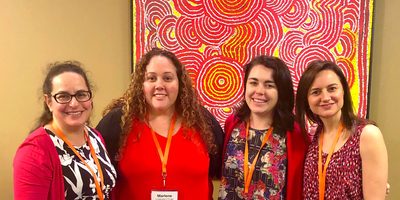
Domestic and family violence – improving outcomes through integrated support
Domestic and family violence: Does Australia need a Women’s Trauma Recovery Centre? - Q & A with Dr Patricia Cullen.
Dr Patricia Cullen is an Honorary Research Fellow at the George Institute for Global Health. She is also a National Health and Medical Research Council Early Career Fellow in the School of Public Health and Community Medicine, where she co-leads the Child and Adolescent Health theme. Patricia is working with key community partners to co-design service innovations that work with and improve the lives of women, young people and families impacted by injury, violence and trauma. Much of her research is focused on the integration of trauma-informed care in health settings. As an advocate for preventing family and intimate partner homicide, Patricia has led reviews of homicide cases in Australia to understand trajectories and strengthen responses.
1) Establish the problem of domestic and family violence (DFV) in Australia
Across their lifetime, one in six Australian women have experienced physical or sexual violence from an intimate partner, while one in four have experienced emotional abuse from an intimate partner– and this has remained fairly stable over the last decade, which means that from a public health perspective, we really need to do more to ensure women’s safety and wellbeing.
Often people think about this in terms of preventing physical injuries but violence against women has far reaching serious and lasting health impacts – in fact it is a leading health risk factor for women aged 18-44 years. This means that experiencing violence is worse for women’s health than other risk factors such as smoking, obesity and alcohol use - and the costs to the Australian economy are estimated to be a staggering 22 billion dollars per year.
While people are often surprised by these figures, this includes all forms of violence against women including sexual violence, psychological and emotional abuse, stalking and coercive control, as well as financial control or abuse. And considering that women may have experienced abuse for many years and sometimes throughout their life from a young age, it shouldn’t be surprising that there are long-term impacts on women’s health and wellbeing. What is surprising though, is that there are very limited resources in our public health system for women to receive support for long-term recovery.
2) What else can the health sector be doing to address the issue of DFV?
The health sector has a hugely important role in addressing DFV, particularly around advocacy, service integration and ensuring that support is accessible and effective for all women. In our research, we have looked at how women access support – we know that some women receive excellent care and support, however, for many women this isn’t always the case.
In terms of access to services – whether police, legal, housing, health, financial - these are generally siloed rather than integrated and working together, which makes it hard for women to have all their needs met. The process can be incredibly stressful and re-traumatising, which is further compounded for women with limited financial means or without transport, for women with a disability or chronic health issue, for women who live in regional or remote communities and for Aboriginal and Torres Strait Islander women who face additional barriers to accessing support.
The health sector is integral to raising awareness of the longer-term health impacts of violence and abuse. Women who have experienced violence or abuse are more likely to have poorer physical and mental health, are over-represented in prison, have increased rates of health service access and homelessness. There can also be impacts on people’s ability to manage other chronic illnesses such as diabetes and hypertension, which is why it’s critical that the health sector workforce is well supported to recognise and respond to women impacted by violence and abuse.
3) What is a Women’s Trauma Recovery Centre?
Domestic and family violence impacts on all aspects of a woman’s and her children’s lives, the most critical being legal, financial and health. To meet these needs in a coordinated way, the Illawarra Women’s Health Centre is proposing to establish a Women’s Trauma Recovery Centre that provides integrated and long-term support to women recovering from the traumatic impacts of violence and abuse.
The Centre will provide wrap around services with medical and health care, as well as legal support, financial counselling and ongoing individual casework and advocacy. The concept is community led and has extensive community and local political support.
4) How would this Centre help those seeking help from DFV trauma?
While women may access health services for injuries or related health issues in the short-term, the longer-term impacts of trauma stemming from violence or abuse, sometimes from many years of abuse, too often goes untreated. The Centre will address this as a dedicated service for women, providing coordinated and comprehensive responses to the long-term, cumulative and intergenerational impacts of violence and abuse.
This initiative will address the psychosocial, physical and mental health impacts of complex trauma for women in the Illawarra, and as a first of its kind in Australia, it will be designed to be easily replicated in other settings.
5) What needs to be done on a larger scale to help establish this Centre?
In policy and services addressing domestic and family violence, there is a broad focus on primary prevention and crisis intervention, with less emphasis on, and very little resources provided for, long-term recovery. Much of the investment is toward addressing perpetrator behaviour and changing long held community attitudes around gender – and Governments have made substantial positive commitments to these issues.
Despite this, the National Fourth Action Plan released last year acknowledges that progress toward ending violence against women and children is complex and will take sustained long-term action with indications that we won’t see significant reductions in the lifetime prevalence for 10 years. So, in the meantime we need to invest in safety, health and healing for women using the best available evidence and care. This means looking beyond crisis intervention toward also addressing the longer-term impacts of trauma stemming from violence or abuse, including the health and psychosocial needs of women and their families.



